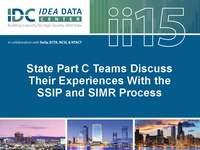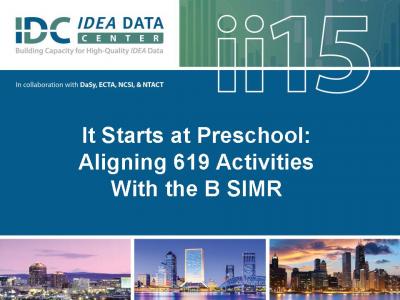Site Search
Results 1 - 5 of 5
Format: Presentations
State Part C Teams Discuss Their Experiences With the SSIP and SIMR ProcessThe presentation focuses on experiences of State Part C teams in analyzing data, selecting their SIMR, and completing their SSIP. Guiding questions help states connect Phase I and Phase II planning.
Format: Presentations
What Data Can Tell Us – and What It Can’t: How to Be Sure We Know What Our Data MeansValidity is about more than results—it is determined by the question asked, the data collection design, and analysis. In this session, presenters led a discussion on what the data can, and cannot, say about outcomes, using examples from a selection of Part B and Part C indicators. Questions posed included: What is the difference between student outcomes and program performance? Can your data tell you which states, districts, or programs are performing better? What policy questions would you like to know about that your data currently cannot answer?
Format: Presentations
National, State, and Local Educational Environments Data: Using the Data to Increase Inclusive Opportunities for Young Children Ages 3-5The session focused on current national and state data on least restrictive environments and inclusive settings for children aged three to five. Participants shared examples and discussed the ways in which they analyze and share data with local programs. In addition, discussions focused on how educational environments data are used to determine specific state and local program improvement strategies and supports.
Format: Presentations
It Starts at Preschool: Aligning 619 Activities With the B SIMRThe presentation provides strategies that are important to providing high-quality preschool programs. Specifically, the information focuses on how high-quality preschool programs support improvement in the Part B SIMR. The presentation includes strategies that ensure high-quality early childhood programs as a critical first step toward later school success.
Format: Presentations
National, State and Local Inclusion Data: Accessing and Using Data to Increase Inclusive OpportunitiesThe presentation focused on current national data on inclusive settings for children, ages three to five. Presenters drilled down to state examples of how state share data with local programs and how locals use that data for program improvement. Presenters discussed potential improvement strategies based on data available to state and local programs. Presentation objectives were to: provide an overview of inclusion and Educational Environments 618 and Indicator 6 data, share state and local reporting, and discuss use of data to improve inclusion.





